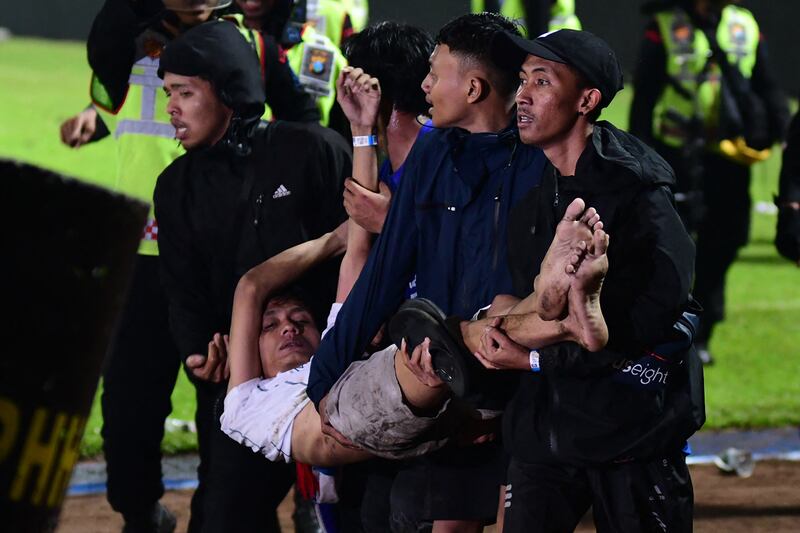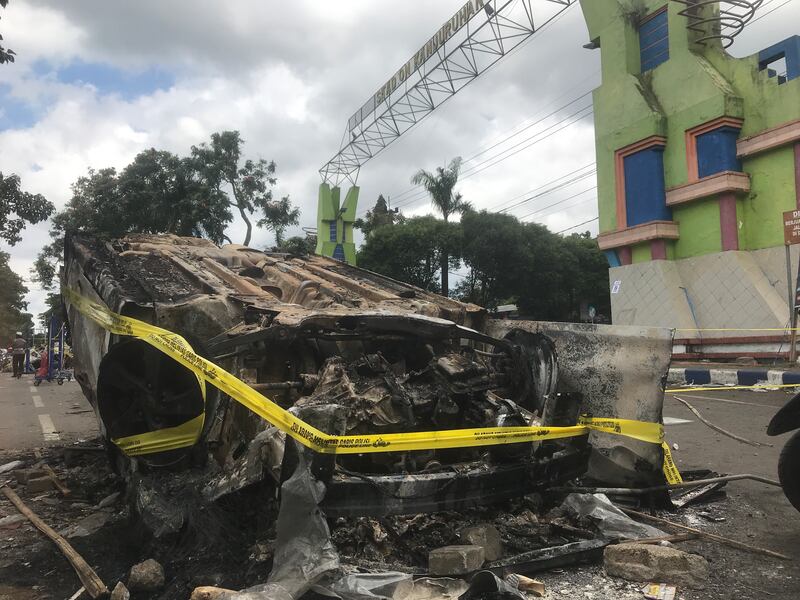Gilang, 22, was one of thousands of fervent Arema Football Club fans who descended on Kanjuruhan Stadium in the Indonesian city of Malang to watch the home team battle it out with a team from Surabaya, another city in East Java.
Hours later, he managed to flee the venue with his life, amid one of the world’s worst-ever stadium disasters.
According to Gilang, the trouble started when fans flooded the pitch after their team narrowly lost the match – Arema’s first home-game loss to Persebaya, the team from Surabaya, in 23 years of bitter rivalry.
So bitter, in fact, that supporters of the Surabaya team were not allowed to attend the match, to prevent the type of fights that have claimed dozens of lives since the 1990s. There have been more deaths among fans of Persebaya (17) and Arema (9) than any other club, according to Save our Soccer, an Indonesian watchdog organization.
"Supporters entered the field, to greet players. Police stopped them, and chaos ensued. Police threw tear gas," Gilang said.
Another Arema fan, Rezqi Wahyu, said disappointed fans flooded the pitch to chase players off it. Footage shows angry supporters throwing objects onto the field.
“More and more of them came and the stadium was getting chaotic because they came from all sections to vent their disappointment at players,” Rezqi wrote on Twitter.
Gilang and his friends were hit with tear gas, although they were still in the stands, he said.
Fans panicked and rushed towards the two nearest exits, doors 13 and 14.
"It was packed. Many victims were crushed. Trampled on," Gilang said. He managed to climb a fence and go back into the stands, but got separated from three companions.
None of them survived.
Indonesia’s national police chief later announced that 125 people had been killed in the incident, while provincial officials put the number of people injured at more than 300. Police were among those killed, authorities said.

Bobi Prabowo, head of a hospital in Malang where victims were being treated, said many were traumatized from being crushed in the press of the crowd, or trampled. Some people had discolored faces because their skin had been irritated by tear gas, he said.
"There are serious injuries, brain injuries. Trauma from impact and hypoxia from lack of oxygen," Bobi said.
Police were forced to fire tear gas at the audience to contain a riot, according to East Java’s regional police chief, Inspector General Nico Afinta. Of 40,000 spectators in the stands, 3,000 rushed onto the pitch.
Rioting spread outside the stadium. Thirteen cars were damaged, including ten police vehicles, he said.
The tragedy would not have happened had fans followed the rules, he said.
"There is cause and effect. They attacked officers and damaged cars," he said at Malang police headquarters, while expressing "regret" and "condolences" over the incident.
Critics pointed out that local police also violated regulations set by the world football governing body, FIFA, which bans the use of crowd-control gas and firearms at stadiums.

In the wake of the incident, Indonesian officials suspended matches organized by the country’s top-tier football league, ordered probes, and promised victims free medical treatment and government aid.
Outside observers cited a burning need for independent, impartial investigations with publicly released findings.
"It's not enough for the national police and the Football Association of Indonesia to conduct their own investigation because they may be tempted to downplay or undermine full accountability for officials involved," Phil Robertson of Human Rights Watch said in a statement.
Amnesty International Indonesia Executive Director Usman Hamid likewise called on the authorities to investigate the use of tear gas in stadiums quickly, thoroughly and independently.
Police officers suspected of violating regulations should be tried in an open court and, if found guilty, receive more than internal or administrative sanctions, he said.
Tear gas should be used to disperse crowds only when violence is widespread and other methods have failed, and never in confined spaces, Usman added.
His comments echoed Gilang’s experience.
"The reaction of the police was arrogant, not protective," he said, angrily holding back tears. "Why direct tear gas at the spectators in the stands who are not rioting?"
